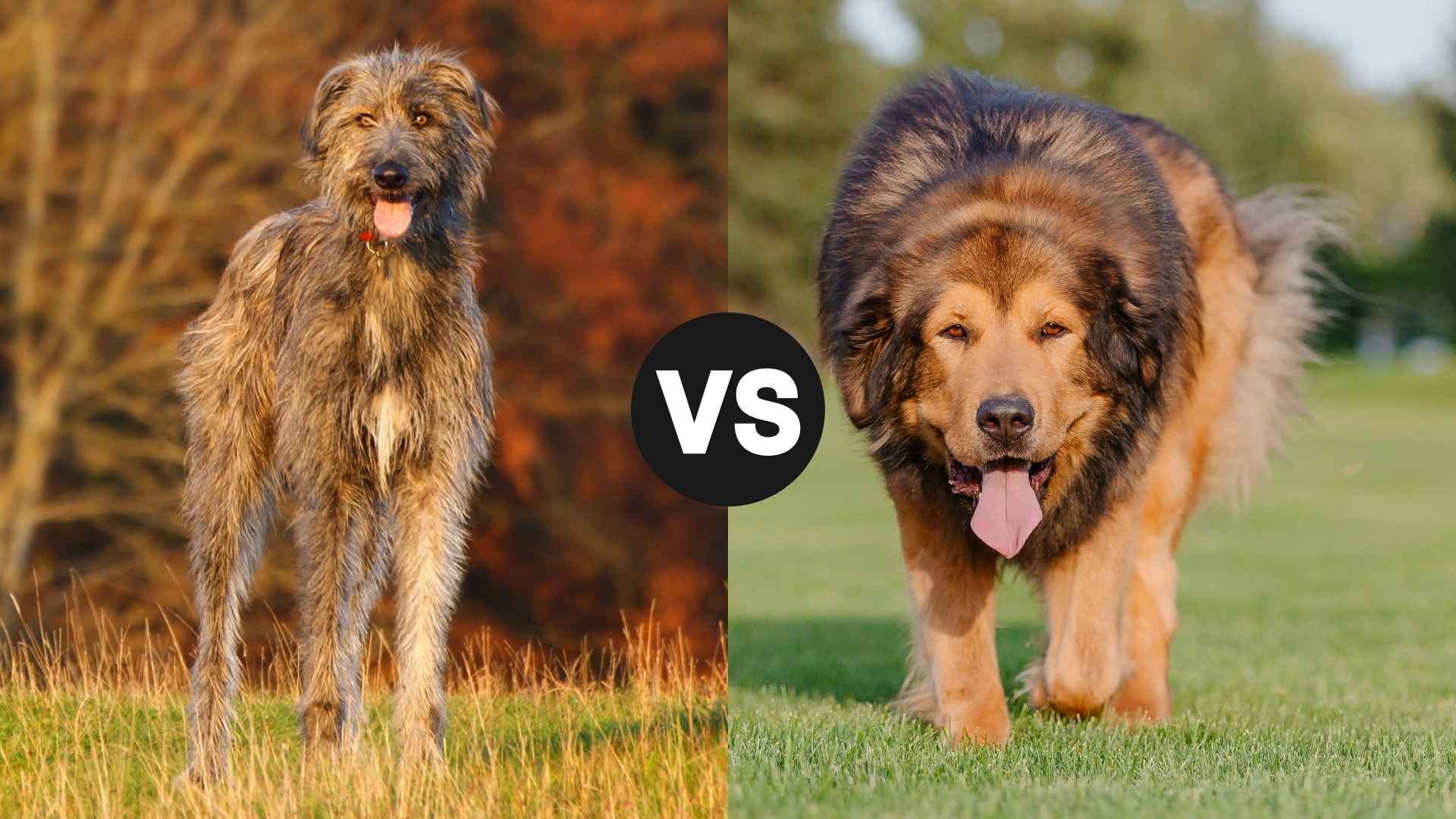When comparing the Irish Wolfhound vs Tibetan Mastiff, you’re looking at two of the most majestic and powerful dog breeds in the world—each with its own unique charm, purpose, and personality.
The Irish Wolfhound, a gentle giant from Ireland, is best known for its towering height, often reaching seven feet when standing on hind legs, and its calm, dignified nature. Despite their impressive stature, these dogs are famously docile and affectionate, making them surprisingly gentle companions.
On the other side, the Tibetan Mastiff is a legendary guardian breed from the mountains of Tibet. With their lion-like mane and commanding presence, Tibetan Mastiffs are known for their loyalty, strength, and unshakable protective instincts.
While both breeds are undeniably majestic, they differ significantly in temperament, history, and lifestyle needs. In this blog, we’ll explore the key differences between the Irish Wolfhound and the Tibetan Mastiff to help you understand which of these noble giants might suit your home best.
Irish Wolfhound vs. Tibetan Mastiff
When comparing the Irish Wolfhound and Tibetan Mastiff, the first striking difference lies in their appearance and temperament. The Irish Wolfhound is a lanky yet muscular hound known for being the tallest dog breed, often reaching seven feet tall on their hind legs.
With a wiry double coat and a calm, dignified nature, they are gentle giants at heart. Originally bred in Ireland to hunt big game and later wolves, their temperament has softened over the centuries, making them affectionate and devoted family companions. Despite their intimidating size, Irish Wolfhounds are notably docile and need ample space but minimal guarding instincts.
In contrast, the Tibetan Mastiff is a powerful guardian breed with deep roots in ancient Tibetan culture. With a massive, lion-like build and a stoic demeanor, this breed was traditionally used to protect estates and livestock in the Himalayas. While naturally aloof and independent, Tibetan Mastiffs are fiercely loyal to their families and retain strong protective instincts.
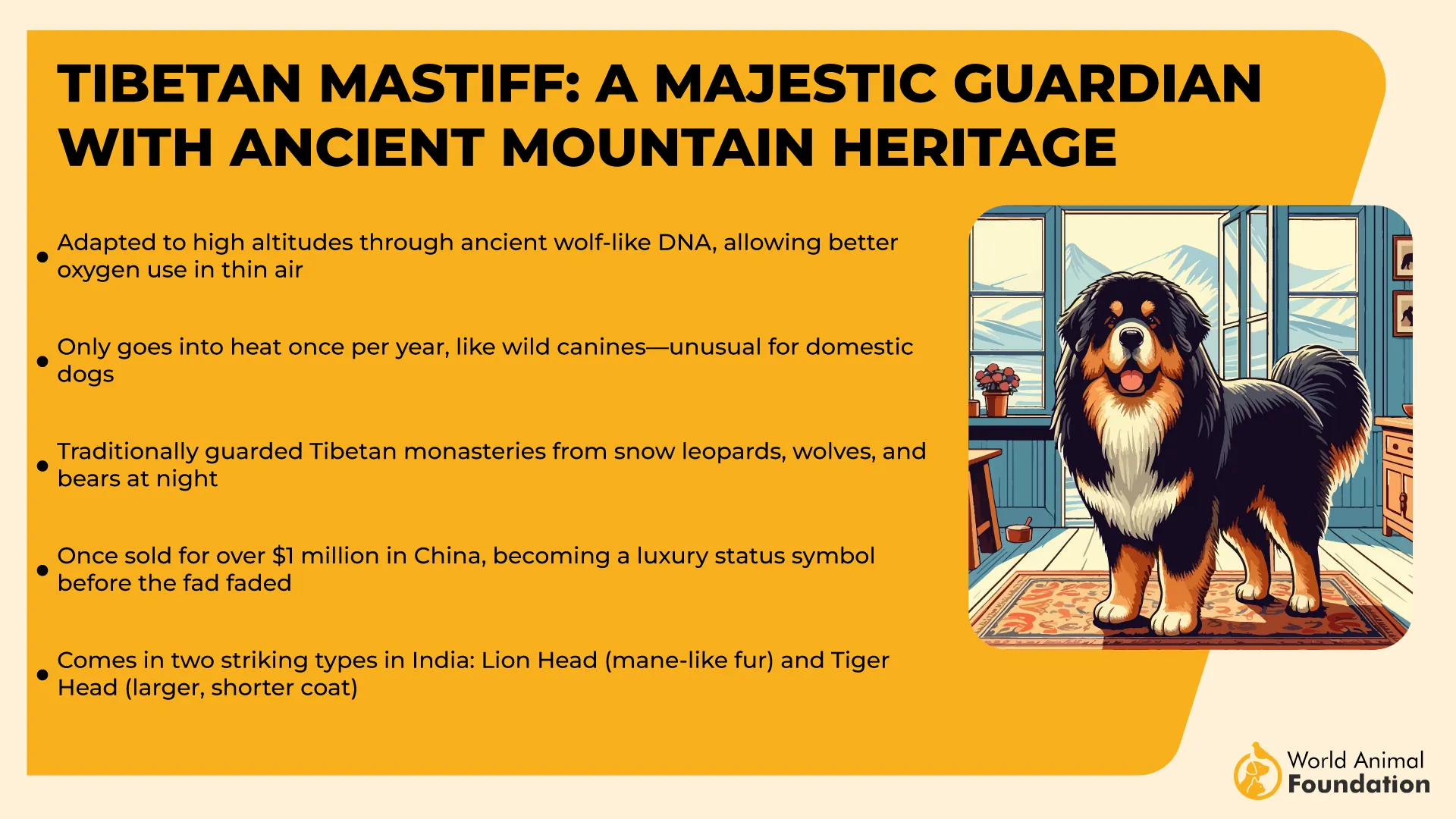
Unlike the friendly Irish Wolfhound, Tibetan Mastiffs are reserved with strangers and require firm, experienced handling. Their rich history, dating back to at least 1100 BCE, and their reputation as the origin of modern mastiff breeds add to their mystique and appeal as noble protectors.
Size and Weight Differences
When it comes to size and weight, the Irish Wolfhound holds the title of the tallest dog breed in the world. These gentle giants typically stand at least 32 inches tall at the shoulder, and when on their hind legs, they can reach up to seven feet in height.
Despite their sheer size, their frame is lean and athletic rather than bulky. Males generally weigh around 140–180 pounds, while females are slightly lighter. Their long legs, deep chests, and wiry coats contribute to their elegant yet powerful appearance.
In contrast, the Tibetan Mastiff is broader and more heavily built, though not as tall. Standing at a minimum of 26 inches for males and 24 inches for females, they typically weigh between 70–150 pounds.
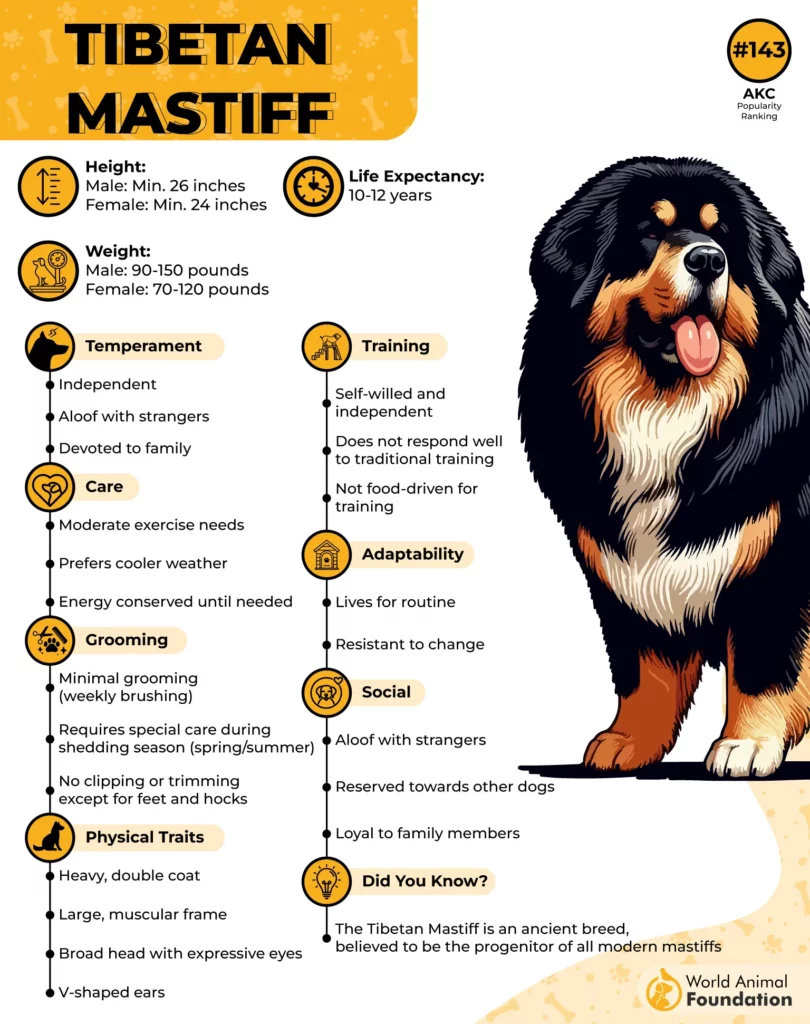
Their muscular frame, large square muzzle, and thick feathered tail curled over the back give them a sturdy and imposing look. While they may not match the Irish Wolfhound in height, their bulk and powerful build make them appear just as formidable.
Temperament and Personality Traits Comparison
The Irish Wolfhound is known for its calm, gentle, and easygoing nature. These affectionate giants are friendly with children and other dogs, especially when socialized early. They aren’t overly vocal but will bark to alert their owners if something seems wrong.
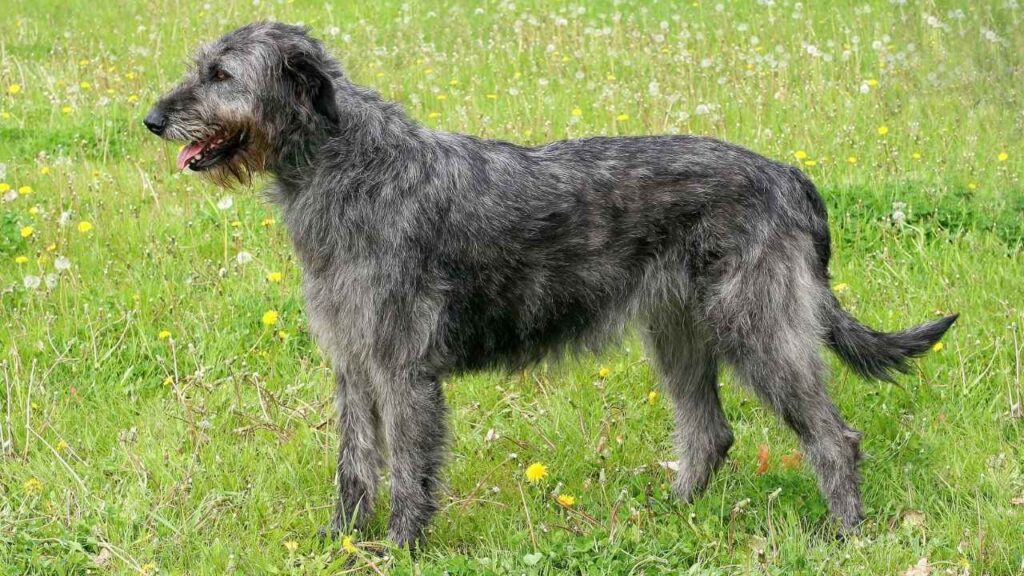
While adaptable to different activity levels, regular exercise is needed to prevent boredom and health issues. However, their strong prey drive means they may chase smaller animals like cats or squirrels.
In contrast, the Tibetan Mastiff is aloof and watchful, deeply loyal to family but reserved with strangers, requiring careful introductions. They tend to be quiet and lazy during the day but more active at night, barking to alert of threats.
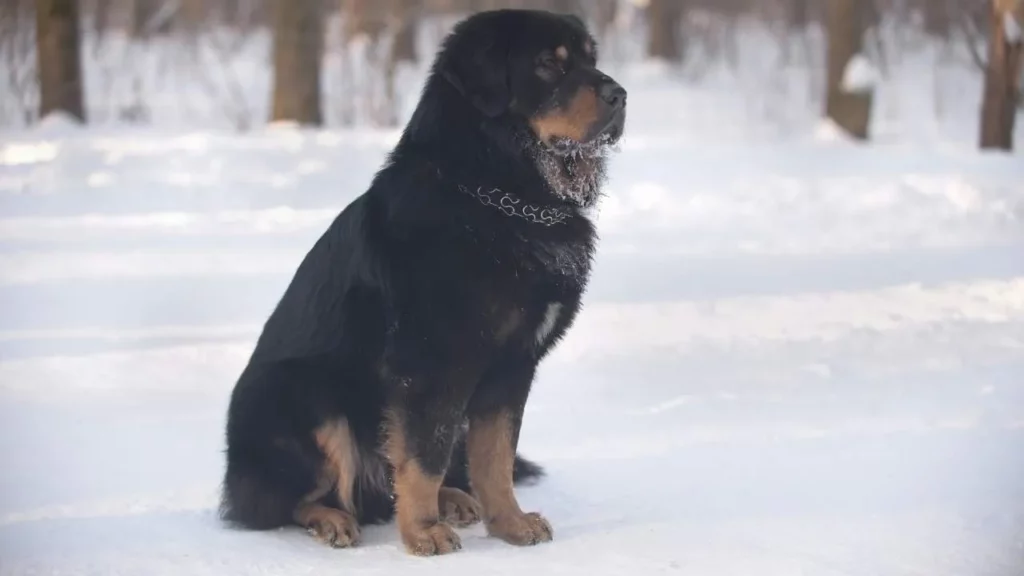
Tibetan Mastiffs need plenty of space and mental stimulation to avoid anxiety or destructive behaviors. Their independent, protective nature makes them excellent guardians but less suited for apartment living or novice owners.
Trainability and Intelligence Evaluation
The Irish Wolfhound is a fast learner with a sensitive, people-focused temperament, responding well to positive reinforcement. They thrive on companionship and benefit from early socialization and gentle, reward-based training. Due to their large size and long growth period, puppies need careful supervision to prevent destructive behavior or injury. Their affectionate nature also makes them excellent therapy or emotional support dogs.
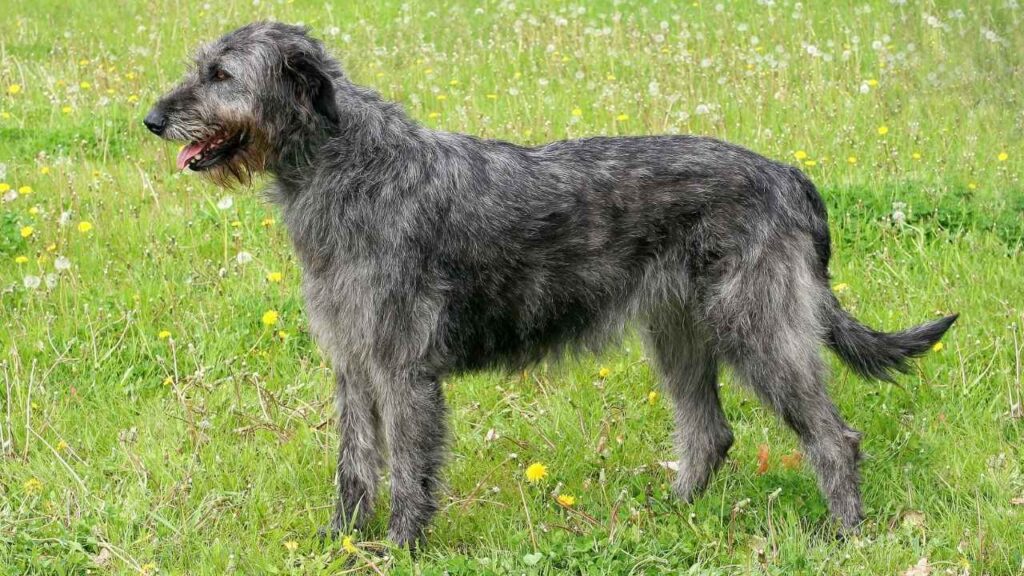
As noted by WebMD, the Tibetan Mastiff is highly intelligent but also independent and strong-willed. They learn quickly but only follow commands when they trust their owner. Food rewards often don’t motivate them, and they may ignore commands outside training. With unreliable recall and a strong instinct to act independently, Tibetan Mastiffs need experienced handlers who can build firm, respectful relationships.
Dietary Needs and Weight Management
When it comes to dietary needs and weight management, the Irish Wolfhound requires a carefully balanced diet tailored to their size, metabolism, and activity level. High-quality dog food, adjusted according to feeding guidelines and veterinary advice, is key. Supplementing their diet with omega-3 fatty acids like DHA and EPA, found in fish oil or joint-support formulas, can help support their skin, coat, heart, and especially their joint health as they age.
In contrast, the Tibetan Mastiff has a slower metabolism and may not be as food-driven, often eating only when hungry. Active Mastiffs benefit from protein-rich diets, while less active ones require careful portion control to avoid obesity. Feeding twice daily is recommended.
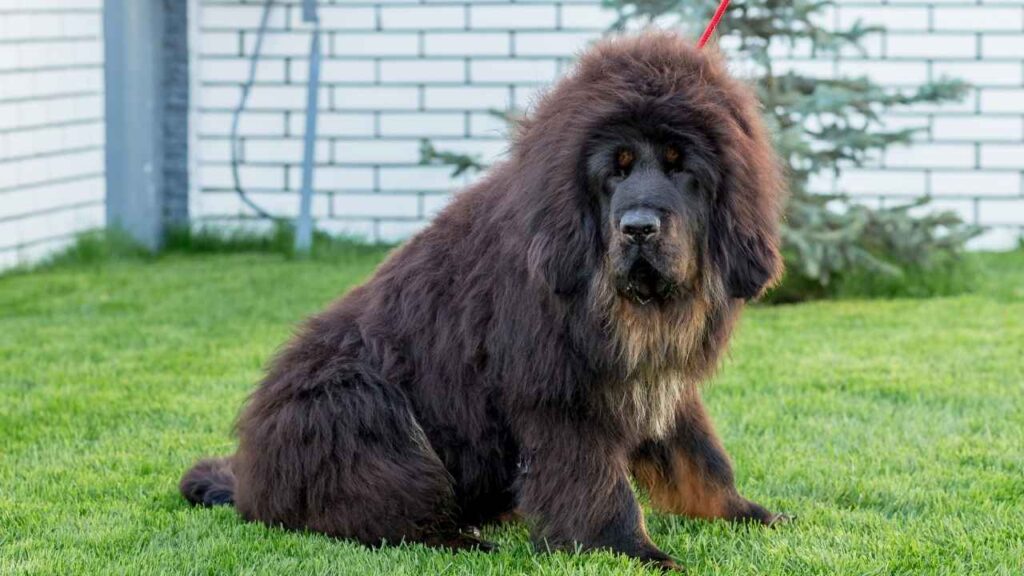
Like the Irish Wolfhound, Tibetan Mastiffs also benefit from omega-3s and glucosamine supplements to support their joints and overall health, particularly important given their size and tendency to gain weight if overfed or under-exercised, states PetMD.
Bite Force and Jaw Characteristics
The Irish Wolfhound, though large and strong, has a gentle nature and only mild play-biting tendencies, mainly as puppies. Their bite force exceeds 400 PSI, but they rarely use it aggressively. Early training and socialization help manage their mouth behavior.
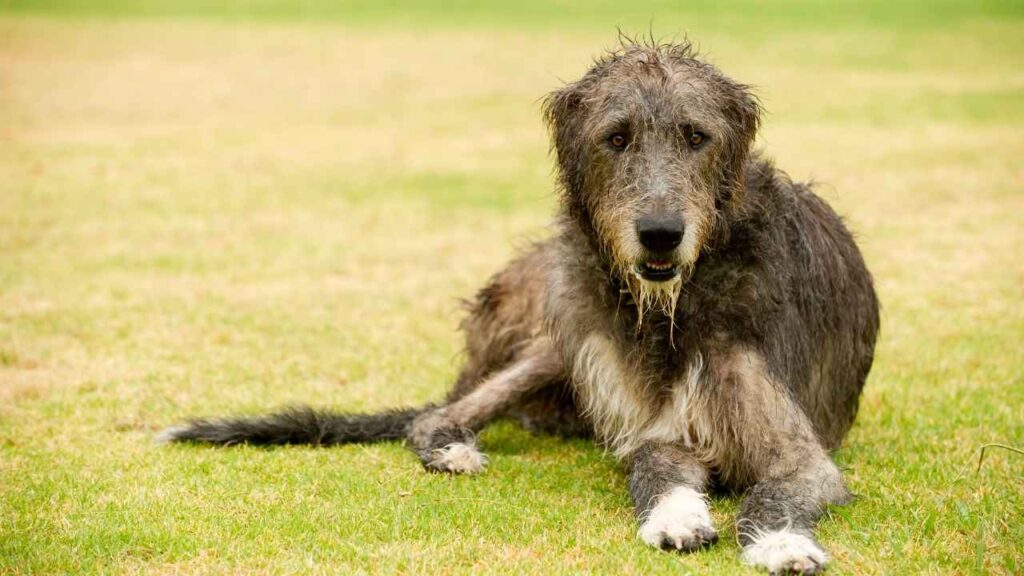
The Tibetan Mastiff’s bite force is stronger, around 550 PSI, reflecting its role as a mountain guardian. Their powerful jaws and muscular build support their protective instincts. Early training and firm handling are crucial due to their formidable bite strength.
Health Issues and Lifespan Expectations
When comparing health issues and lifespan, the Irish Wolfhound, despite being a generally healthy breed, has a shorter lifespan of around 6 to 8 years, largely due to its massive size. They are prone to several serious hereditary conditions, including bloat (gastric dilatation-volvulus), which can be life-threatening if not treated immediately.
Heart disease is another concern, especially Irish Wolfhound Cardiomyopathy and atrial fibrillation, making regular cardiac checkups essential. Other notable risks include osteosarcoma (bone cancer), liver shunts, pneumonia, hip and elbow dysplasia, and eye conditions like cataracts and progressive retinal atrophy.
The Tibetan Mastiff has a slightly longer average lifespan of 10 to 12 years, but is also susceptible to various genetic health concerns. Eye problems, particularly entropion and ectropion—conditions where the eyelids roll inward or outward—are common due to their deep-set eyes. They can lead to chronic infections or vision issues.
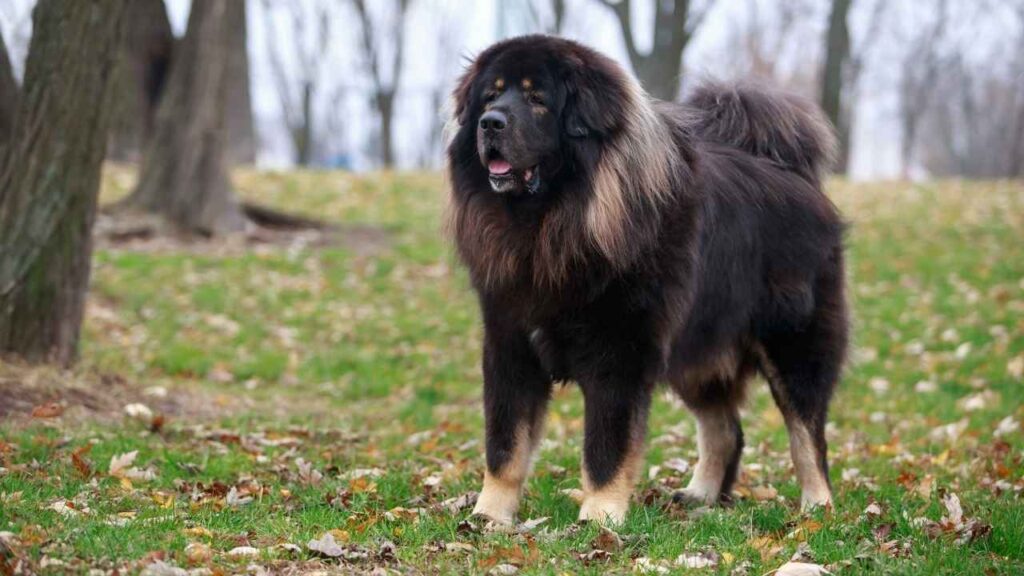
Hip and elbow dysplasia are also prevalent, potentially causing pain and mobility issues if not managed properly. Hypothyroidism is another concern in the breed. Early detection, responsible breeding, and weight management are key to ensuring a longer, healthier life for both of these giant breeds, states PetMD.
Allergies and Grooming Needs
Irish Wolfhounds have a rough, wiry double coat with a softer undercoat that sheds moderately year-round but doesn’t go through dramatic seasonal shedding. Their grooming needs are relatively low-maintenance, with weekly brushing sufficient to manage loose hair and keep the coat healthy.
Unlike some double-coated breeds, they don’t “blow out” their coat, which can make them slightly easier to manage for allergy-sensitive households. Regular nail trimming is essential, as overgrown nails can lead to discomfort or mobility issues, states AKC.
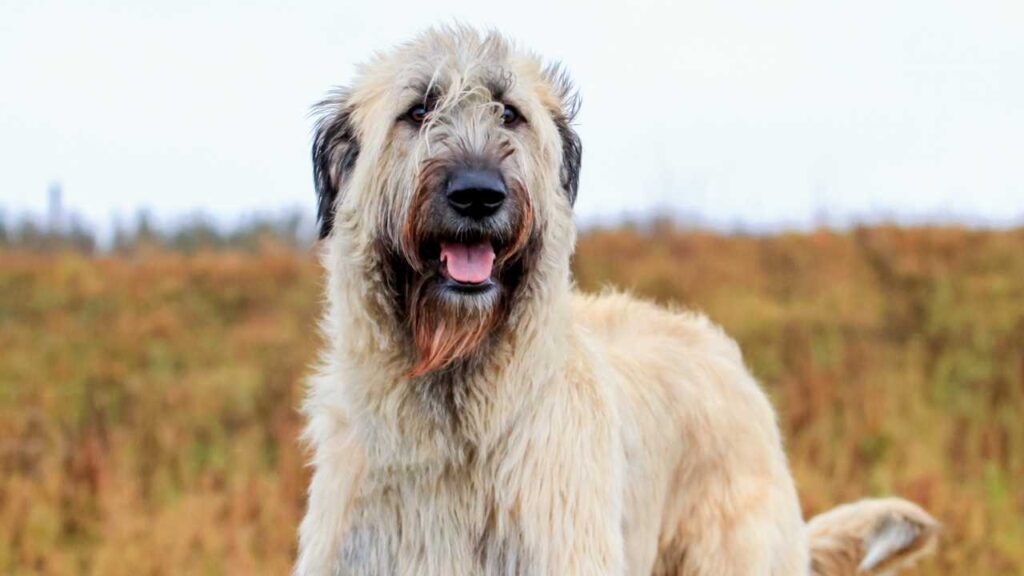
Tibetan Mastiffs, on the other hand, have a denser and more dramatic coat, with a thick woolly undercoat and coarse outer guard hairs. While they require minimal grooming for most of the year—just weekly brushing and combing—the breed experiences a heavy seasonal shed, or “coat blow,” typically in late spring or summer.
This event can trigger allergic reactions in sensitive individuals due to the sudden release of dander and hair. During shedding season, an undercoat rake or deshedding tool becomes essential for proper grooming and coat maintenance.
Conclusion
Both the Irish Wolfhound and Tibetan Mastiff are powerful working dogs with a history of guarding livestock and protecting against predators like coyotes. They share similarities, such as medium-length coats and coat colors like brown, gray, and cream, and often weigh about the same.
However, their temperaments differ—Irish Wolfhounds are gentle and pack-oriented, while Tibetan Mastiffs are independent and territorial, making them best suited for experienced dog owners.
Most people seeking a loyal guardian and companion should understand these breeds’ size, behavior, and needs. They require space, proper training, and mental stimulation to thrive.
Whether in Canada or elsewhere, these majestic dogs are fine pets for those who respect their natural instincts and history as courageous protectors of property and family.


